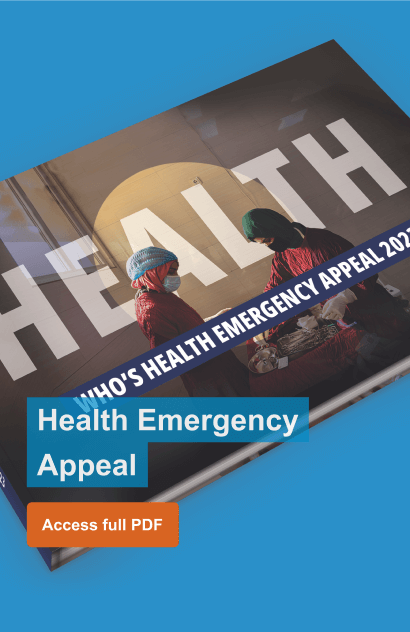
WHO's Health Emergency Appeal
US$ 2.5 billion needed by WHO in 2023
A team of doctors prepare to perform a C-section at Malalai Hospital in Kabul, Afghanistan on 21 November 2022.
Emergency appeals
All →Health Emergency Appeal 2023
As we enter 2023, the number of people in need of humanitarian relief has increased by almost a quarter compared to the last year, with a record 339 million people requiring urgent assistance – many of whom are at risk of serious health threats.
The rise in climate change related disasters, conflict and its repercussions for food systems, and the ongoing impact of the COVID-19 pandemic has created a dangerous combination of threats to global health.
With increased funding and urgent action, we can ensure that health is protected during emergencies - saving lives, supporting recovery efforts, preventing the spread of diseases within countries and across borders, and ensuring that communities have the opportunity to rebuild prosperous futures. This will ultimately protect progress towards the Sustainable Development Goals.



-(1).jpg?sfvrsn=564f6154_3)







